Ho Ho How: Christmas Science Revealed
Unwrap the merry mysteries behind festive phenomena, from tangle-prone tree lights to mathematical lyrics in classic carols!
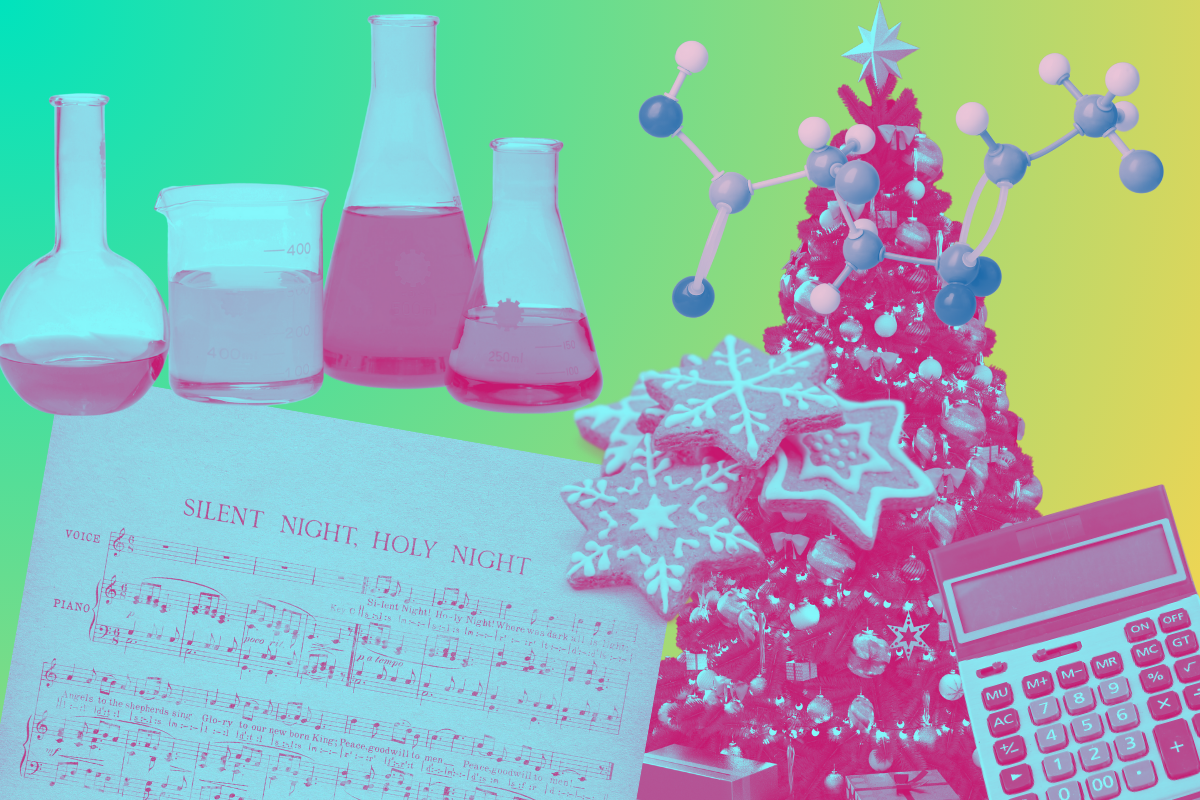
Collage created in Canva by Jamie Uy
Chemistree, oh, chemistree… It’s the jolliest time of the year! Behind the sparkle of holiday magic like tinsel, eggnog, and presents, though, is a whole lot of science. Let’s unwrap the scientific elements of some festive traditions.
The Chemistry of Christmas Feasting
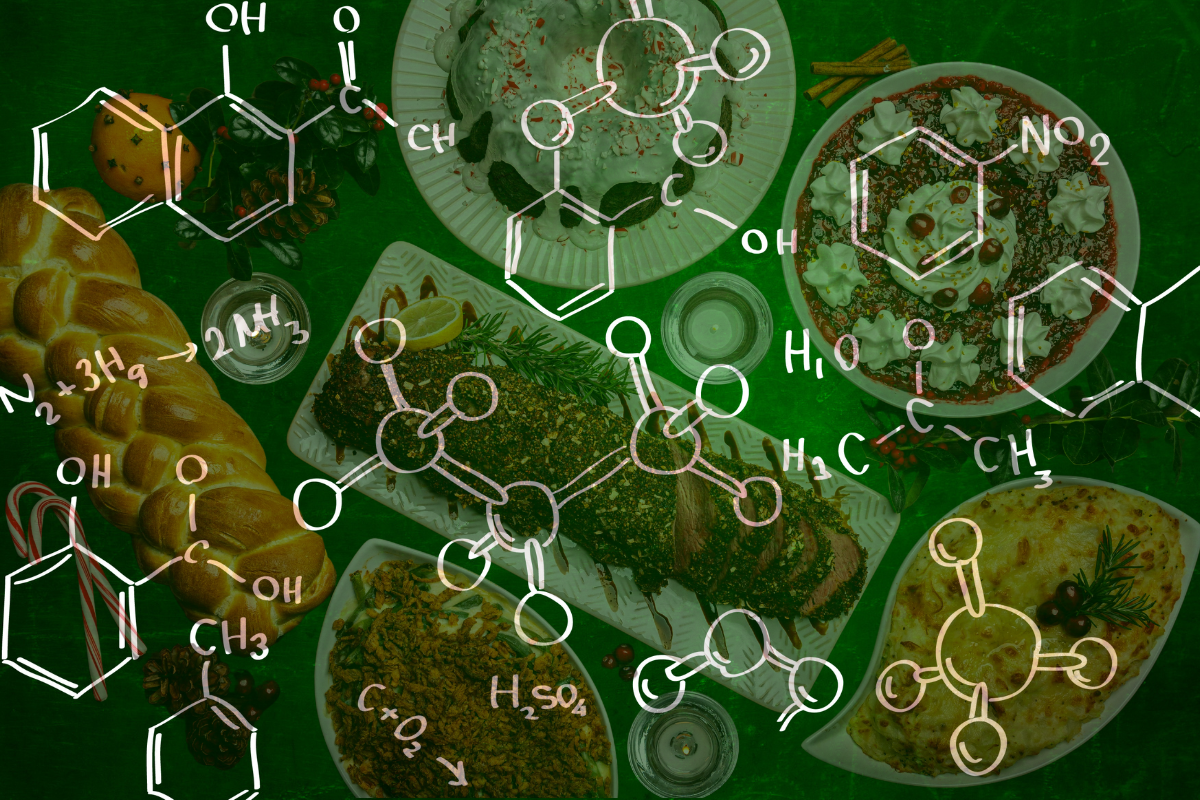
Collage created in Canva by Jamie Uy. Christmas dinner photo credits: Jed Owen/Unsplash
What makes a good holiday menu, gastronomically and chemically? Typical Christmas foods like pudding and mince pie may not be so common in Singapore, but Eurasian delicacies like devil curry are local twists on European favourites that commonly appear on the Christmas dinner table. Singaporeans might also cook Western dishes like turkey with Asian spices, such as ginger and chilli. But what makes certain ingredients taste so good together?
One theory from chefs and food scientists is food pairing, whereby ingredients sharing flavour compounds (chemical profiles) are more likely to pair well than ingredients with different flavour compounds. For example, red wine and red meat.
However, another theory that has emerged is food bridging, where a third ingredient "smoothes contrast between ingredients" that have dissimilar flavour compounds. Researchers found that elements of these principles appear across culinary traditions, albeit in interesting ways: they concluded Southeast Asian food, for example, “avoids food-pairing and follows food-bridging.”
If you want to experiment with some novel new Christmas menus, try exploring this flavour graph to look for ingredients that share chemical profiles, or a third ingredient that could merge unusual flavours (watch this New Scientist experimental Christmas dinner for inspiration).
You can also concoct some science yourself with these festive cocktail recipes from BBC Science Focus that use food-pairing to combine coffee and chocolate, and cranberry and lime for some bubbly fun (drink responsibly!).
The Physics of Christmas Tree Lights
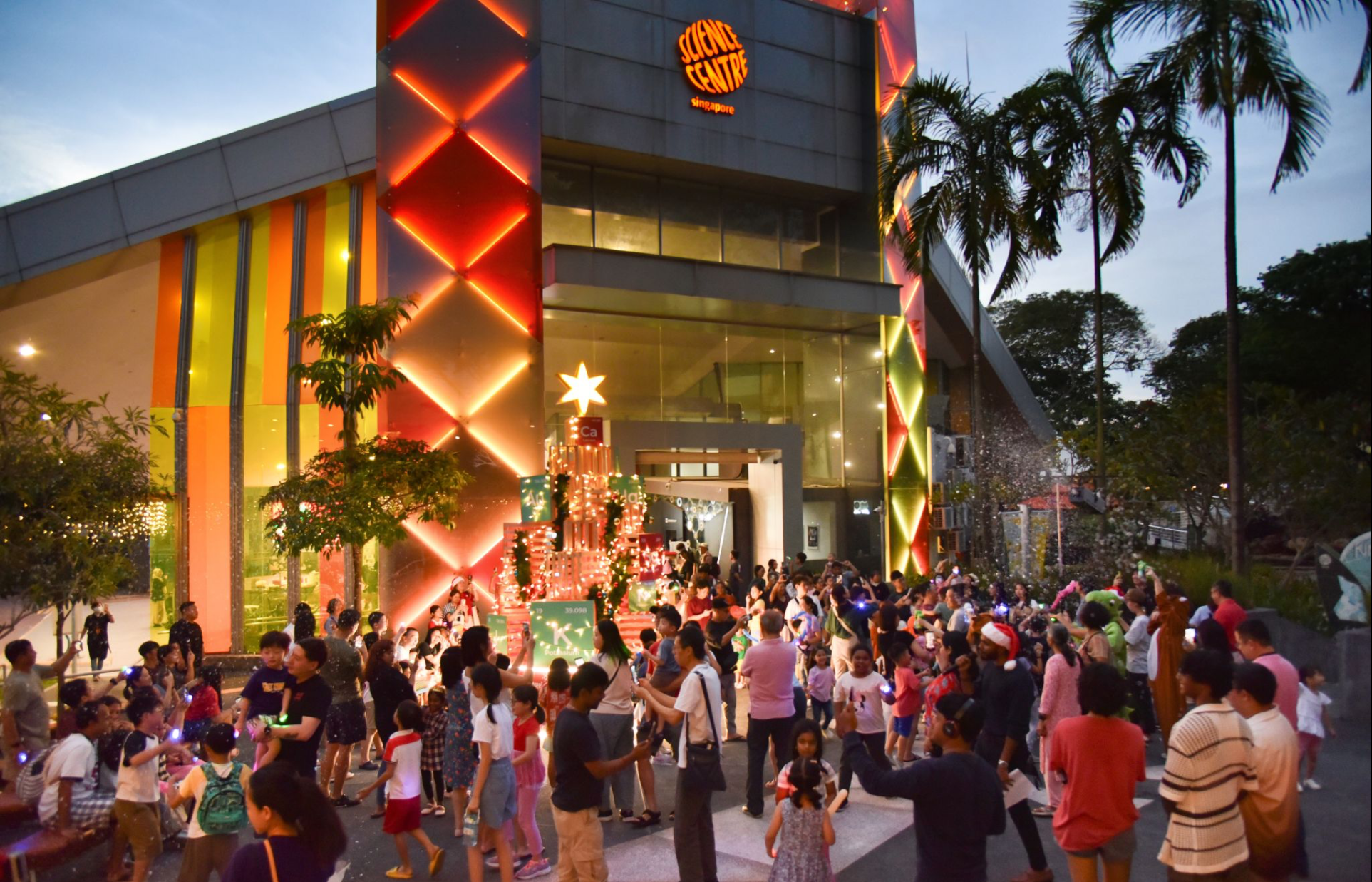
Visitors enjoy the Christmas light-up event on 1 December 2024 at Science Centre Singapore. Credits: Science Centre Singapore
Love strolling and admiring the Christmas light-up along Orchard Road? If you’ve ever tried to decorate a Christmas tree with fairy lights, you know that stringing up all those lights is a lot harder than it looks.
No, it’s not just your imagination – those Christmas tree lights really are scientifically primed to get all tangled.
Several years ago, two physicists at the University of California, San Diego conducted a study published in Proceedings of the National Academy of Sciences to find out how easily knots form. The researchers shook strings of various lengths in a mechanically-rotating box, as if tumbling “socks in a dryer”, and measured how many knots appeared and how fast.
After repeating the experiment more than 3,400 times and crunching the numbers, they concluded that the longer the string compared to its diameter, and the more flexible the material, the more likely knots appeared.
Given that for a 6-7 foot Christmas tree you may need anywhere between 15-20 metresof lights or more (which are designed to bend around the tree branches), the length-to-diameter ratio and the flexibility of Christmas lights make it more likely you’ll discover a tangled mess in your holiday decorations storage box.
In addition, cords with intertwined metal wires like Christmas lights tend to be shipped and packaged spooled, which introduces natural curvature and make it even harder to straighten the cords (coincidentally, this is why your wired earbuds become a tangled blob in your pocket). The light bulbs don’t help either, since they become sticking points and introduce friction.
What’s the recommended way to get headache-free dazzling Christmas lights? One suggestion is using LED rope lights instead of fairy lights, since they are less flexible and yet still can wrap around a tree.
If you still want the traditional look though, some common hacks are to use twist ties to secure cord sections, or wrap the Christmas tree lights tightly around cardboard sheets and tape down the edges. It’s knot you, it’s physics!
The Mathematics of Christmas Carols
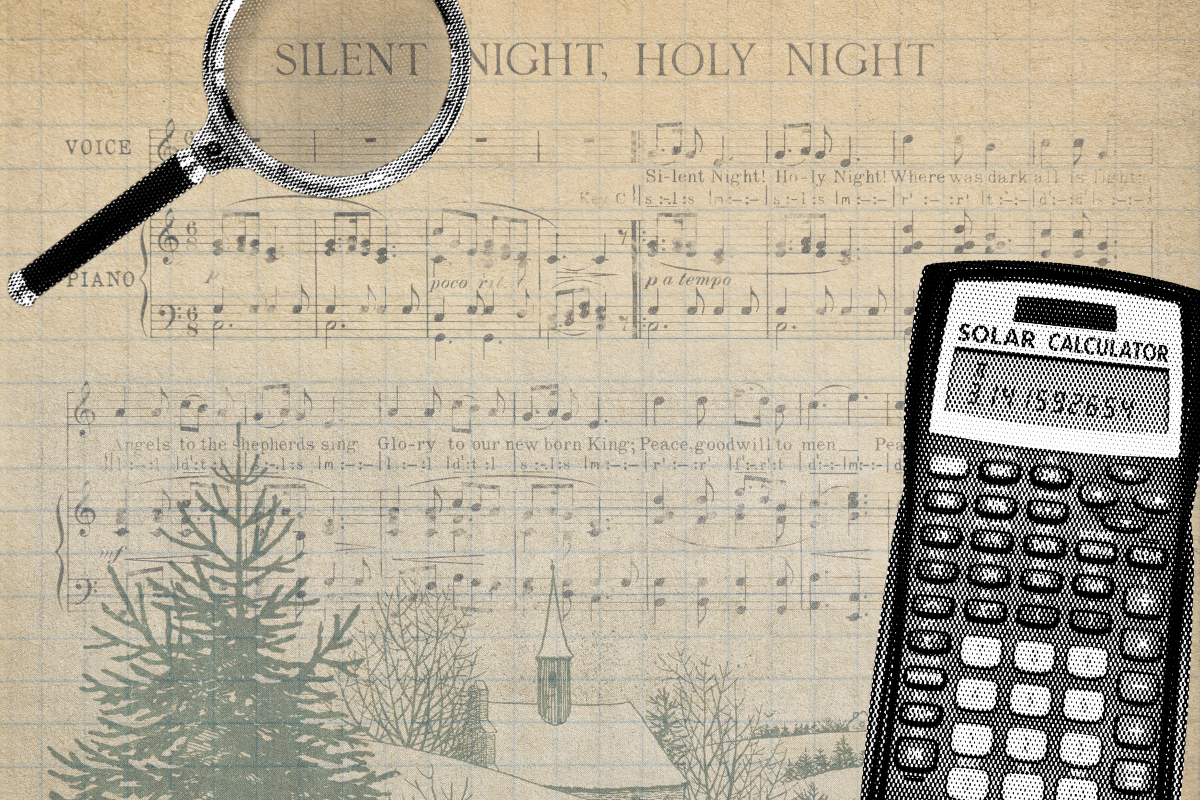
Graphic created in Canva by Jamie Uy.
Mariah Carey’s time to shine is here. Besides infinitely repeating Christmas carols in shopping malls, though, are there any interesting mathematical patterns in holiday song lyrics?
Here’s a puzzle for you: can you guess how many gifts the singer receives in the "Twelve Days of Christmas"?
Lucky for you, mathematicians have broken down the math behind the classic song’s running total of gifts like turtle doves, golden rings, and a partridge in a petri–oops, pear tree!
|
Day |
Gifts received on the day |
Running total at end of each day |
|
1 |
1 |
1 |
|
2 |
1+2=3 |
1+3=4 |
|
3 |
1+2+3=6 |
1+3+6=10 |
|
4 |
1+2+3+4=10 |
1+3+6+10=20 |
|
5 |
1+2+3+4+5=15 |
1+3+6+10+15=35 |
|
6 |
1+2+3+4+5+6=21 |
1+3+6+10+15+21=56 |
|
7 |
1+2+3+4+5+6+7=28 |
1+3+6+10+15+21+28=84 |
|
8 |
1+2+3+4+5+6+7+8=36 |
1+3+6+10+15+21+28+36=120 |
|
9 |
1+2+3+4+5+6+7+8+9=45 |
1+3+6+10+15+21+28+36+45=165 |
|
10 |
1+2+3+4+5+6+7+8+9+10=55 |
1+3+6+10+15+21+28+36+45+55=220 |
|
11 |
1+2+3+4+5+6+7+8+9+10+11=66 |
1+3+6+10+15+21+28+36+45+55+66=286 |
|
12 |
1+2+3+4+5+6+7+8+9+10+11+12=78 |
1+3+6+10+15+21+28+36+45+55+66+78=364 |
Table from Maths Careers
If we write this mathematically, on day n, the singer receives 1+2+3+...+n gifts from their true love, which is the sum of n natural numbers formula. The general formula can also be expressed as 1 + 2 + 3 + … + n = 1/2n (n+1). That’s a whopping 364 gifts over just 12 days – Santa’s sleigh must have been busy!
There are some other cool patterns hidden in the lyrics, too. If you take a closer look at the number of gifts received on each day (1 the first day, 3 the second day, 6 the third day), they make up a set of numbers known as triangular numbers, because they can be represented in dot form to make a triangle.
Yule Love These Holiday Activities at Science Centre Singapore!
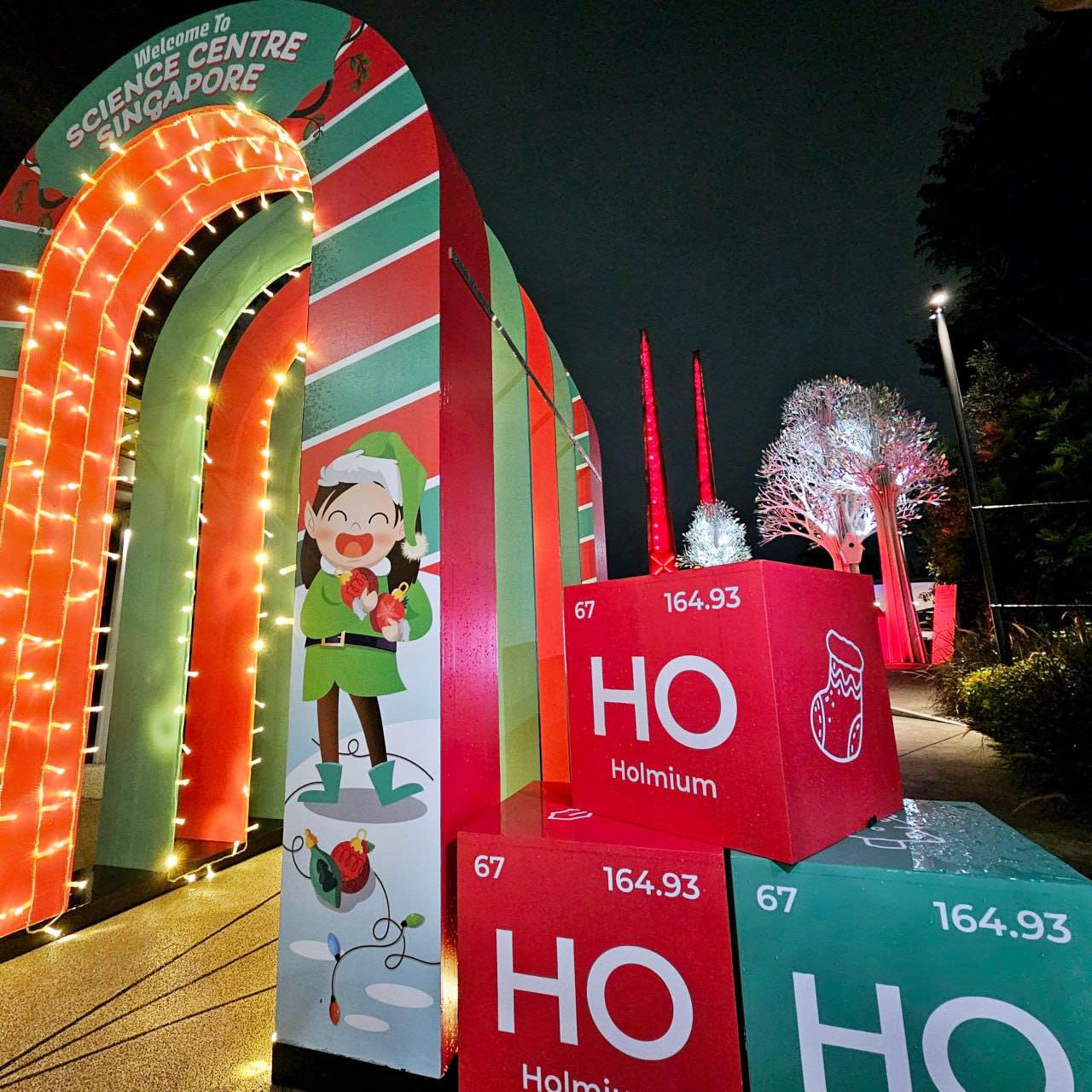
For more holiday science, step into a Sci-sational Christmas at Science Centre Singapore! Visit Elf Village in Hall A from 14-December—25 December 2024. Discover enchanting scents of the yuletide season, engineer an igloo, and make some crafts with Santa's elves! Activity hours and more information can be found here.
Want to give the gift of science all year-round? Sign up for an Annual Pass with the promo code XMASHOLIDAY (valid until 31 December 2024) to enjoy unlimited access to the Science Centre Singapore or KidsSTOP™ (depending on your pass type), along with exclusive benefits like special discounts, members-only events, and surprises throughout the year.
Visit the Annual Pass Holiday Booth in the entrance to Science Centre Singapore from 29 November—29 December 2024, 10:00am-2:00pm daily to learn more and enjoy festive perks from a free circuit lighthouse activity to stocking stuffers.
Written by Jamie Uy
Last updated 19 December 2024

